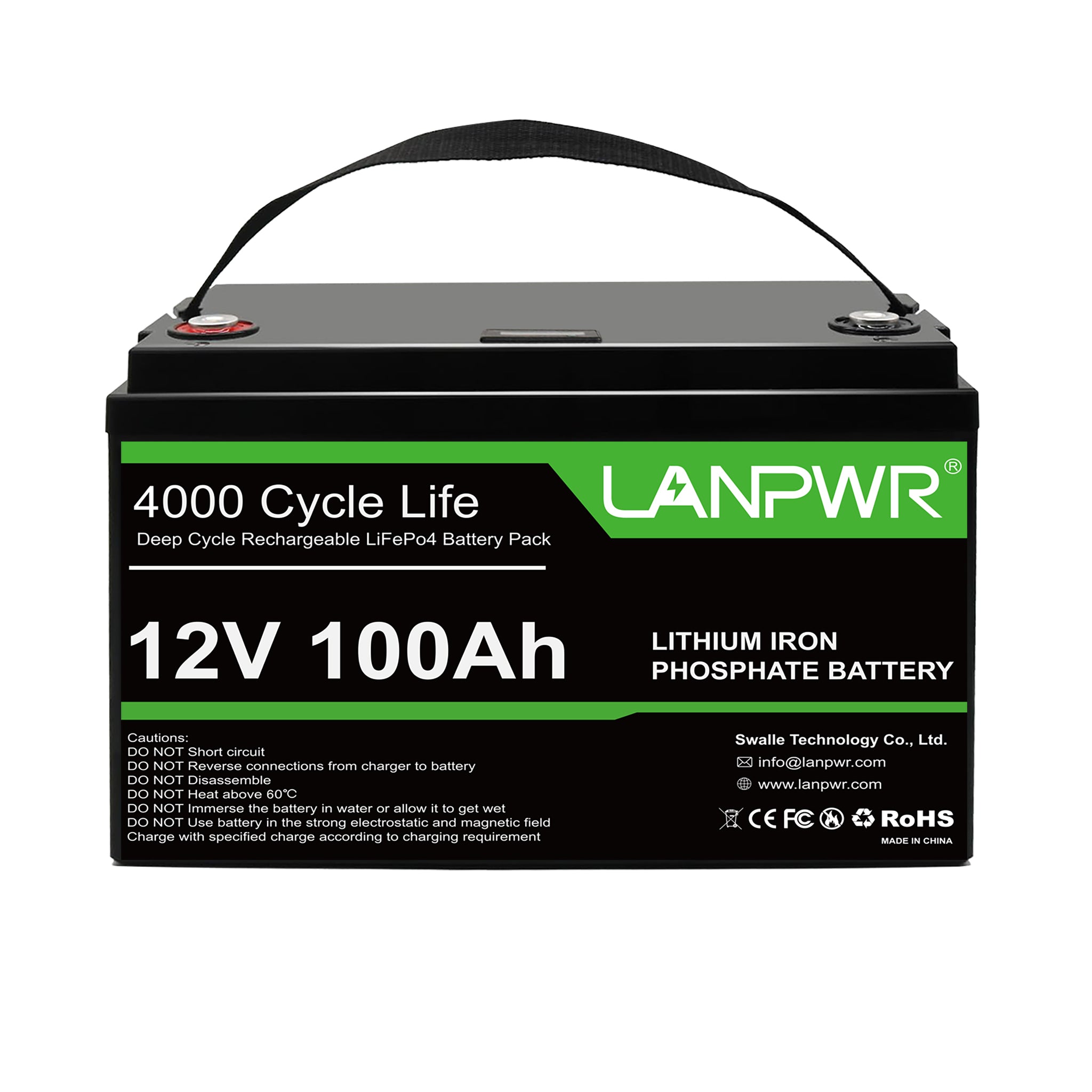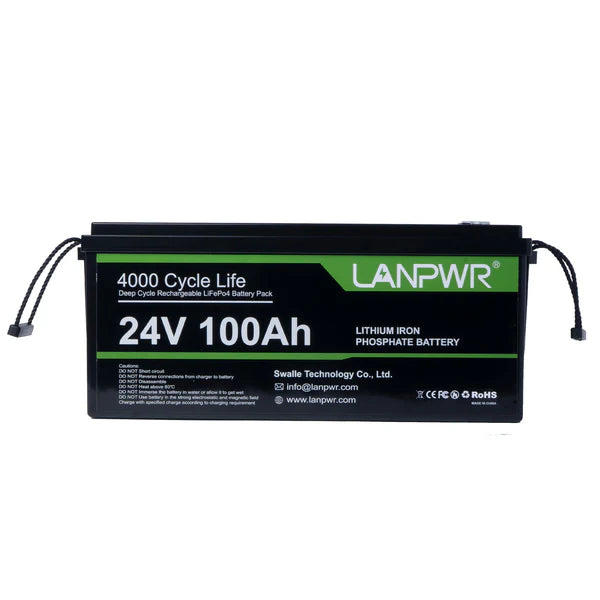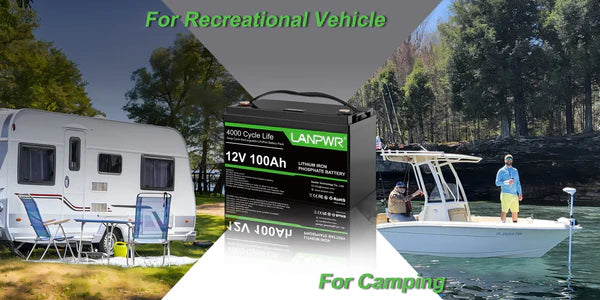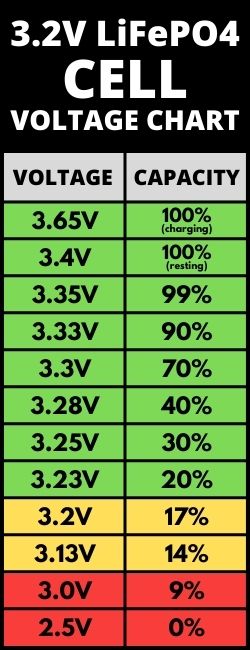Because of their safety, longevity, and performance properties, Lithium Iron Phosphate (LiFePO4) batteries have become an increasingly popular choice among industries. The best LiFePO4 battery is the one that meets your requirements for your renewable energy system, electric vehicle, or mobile application. Our comprehensive guide will make it easier for you to make your choice by outlining the most important factors you should take into consideration when looking for the right LiFePO4 battery Aussiespecs for your application.
LiFePO4 Battery Knowledge
Composition and Advantages
LiFePO4 is a typical lithium-ion battery that uses lithium iron phosphate as a cathode material, and it has some advantages over other lithium-ion batteries.
Safer: Better heat and chemical stability, mitigating the risk of thermal runaway.
Cycle life: In many applications, 2000+ cycles are possible at 80% DoD - a long life for most residential battery systems.
Performance: The output voltage is stable, and has quick discharge efficiency.
Minimized Environmental Impact: Lack of heavy metals including cobalt reduces the environmental impact.
Applications
The practical applications of LiFePO4 batteries include:
Photovoltaic battery Storage Power2 Gas Storage
EVs: for cars, bikes and scooters.
Mobile Clinical Devices: notebook computers, cameras, and medical applications.
Marine & RV Ulta | Boats, RVs, and off-grid applications.
Things To Know Before Selecting The Best LFP Battery
Application Requirements
Power and Energy Needs
Power (Watts): Decide the watts your application needs. This is the power consumed or provided and is nothing but Voltage (V) × Current (A).
Type of Energy (Watt-hours or Amp-hours): The total energy supply expected by the application This is known as the capacity of the battery and is measured as Voltage (V) × Capacity (Ah).
For example, if your device is 12V and draws 10A, then the power needed is 120W, and if you want to run it for 10 hours you will need a battery of at least 1200Wh or 100Ah.
Load Characteristics
When you determine whether your application has a constant or variable load. Certain devices can pull a constant stream, while others have peaks or changes in their draw.
Peak Power: Any peak power that would be demanded and the battery must be able to deliver that spike in power without losing performance.
Battery Specifications
Voltage
Choosing the Right Voltage: Find the battery that fits your app voltage. Different configurations are 12V, 24V, and 48V systems. Make sure the battery voltage suits your device or system requirements.
Capacity
Choose a battery with a capacity of Ah or Wh enough to satisfy your energy requirements. The larger and heavier the battery becomes while offers a higher capacity to store more energy. The trade-off between capacity and portability or real estate available.
Discharge Rate
Continuous Discharge Rate: Make sure the battery satisfies the continuous discharge rate required by your application.
Maximum Current Discharge Rate: Ensure the battery is capable of providing sufficient current during brief peaks without damage.
Environmental and Physical Influences
Size and Weight
When it comes to space and portability, remember, that battery size and weight are key. LiFePO4 batteries are typically less heavy than lead-acid batteries obviously, but larger capacity means more space and mass.
Operating Temperature Range
Consider the temperature that the battery will run under. LiFePO4 batteries work best in a temperature range of -20°C to 60°C, any outside of that and both long-term performance and the lifespan of the battery can be affected, massively.
Battery Management System (BMS)
The safe operation of LiFePO4 batteries is heavily dependent on a high-quality Battery Management System (BMS). The BMS is responsible to watch over and control important parameters like :
Cell Balancing Building a cell balancer.
Overcharge/Over-discharge Protection (prevent the cell from exceeding safe voltage limits)
Temperature Monitoring: guards against overheating.
Protection against short circuits.
The important point to stress is that a good BMS will provide safety and longevity.
Cycle Life and Warranty
Cycle life - This metric of a battery provides an estimate of how many charge-discharge cycles it can withstand before meeting the end of its useful life, Firestone said. More Cycles: A higher life cycle would have a longer-lasting battery. Manufacturers usually give guarantees in cycles or years out what the coverage is and how long you can expect the battery to last in theory.
Cost Considerations
While LiFePO4 batteries carry upfront price premiums over traditional lead-acid varieties, the longer service life and higher efficiency can translate to lower costs over the life of the battery. Factor in the purchase price, lifespan, and maintenance costs to determine your total cost of ownership.
Reputation of Brand and Manufacturer
Most Common Explore about the Brand Copyright and Reputation of the Manufacturer Seek reviews, certifications, and customer feedback to ensure that you are buying a tested and proven product. Older brands can offer better and more complete after-sales support, and warranty.
How to Choose Correct LiFePO4 Battery Step by Step
Step 1: Basic Needs
Determine the Voltage and Capacity Requirements: Considering your application in the field, identify the voltage and ascertain some idea of the needed capacity.
Determine Load Characteristic: Know the Power consumption of your device or system (peak power demand).
Step 2: Do your homework and comparisons list batteries that may work for you: Open up the list for any battery in your voltage capacity.
Find Specifications: Continous and peak discharge rates, size, weight, and temperature (many more).
Step 3: Specifications of BMS and Safeguards
Most importantly: Verify BMS Features - Confirm Not Only that the battery BMS is Good with Cell Balancing and overcharge/overcharge but also with appropriate temperature monitoring and short circuit protection.
Step 4: Cycle Life and Warranty Life Evaluation
Cycle Life Comparison: Batteries with high cycle life ratings last longer.
Check Warranty Terms: Read the warranty terms including what is warranted and for how long the warranty is good.
Step 5: Weigh Cost and Brand Name Next
But, make sure you factor in the later purchase price and the possible savings with a new vehicle on a longer life shell and less maintenance requirements, total cost of ownership.
Trustworthy Brands: Opt for brands that have good customer reviews, and dedicate good customer support.
Step 6: Make Your Decision
Balancing All Factors: Take into account all factors such as the technical specification, safety features, price, and brand reputation to make an educated decision.
Buy and Install: Once you have found the perfect battery, buy it and install it according to the manufacturer's instructions for installation and usage.
Success Story: Selecting a LiFePO4 Battery in a Stand-alone Solar Electricity System
Scenario
Solar 12V DC appliances in a cabin and a few 110V AC appliances via an inverter - the solar system needs a battery. This is intended to be capable of supporting the cabin for three days without the sun.
Requirements
Daily Energy Consumption: 500Wh
Autonomy Period: 3 days
Therefore, your T E: 500Wh x 3 = 1500Wh.
Battery Voltage: 12V
Minimum Capacity: 1500Wh / 12V ≈ 125Ah
Evaluation
Voltage: 12V LiFePO4 cell
Capacity: Battery should be greater than 125 Ah. Considering overheads, the perfect battery would be 150Ah or so.
Nominal Discharge Rate: Make sure that the battery will provide the continuous load of your appliances.
BMS Functions: Check a battery has a battery management system (BMS) with overcharge, over-discharge, and temperature protection.
Cycle Life and Warranty: Go for a battery with a higher cycle life (over 2000 cycles) and a good warranty period (5 years or more).
Brands: Always go for reputed and good-rated brands.
Decision
You do research and decide on a 12V 150Ah LiFePO4 battery from a responsible manufacturer with at least a decent BMS, good cycle life, and a 5-year warranty. You can be assured, that the battery selected is compatible with your energy needs and will offer reliable performance and compound your cost savings for a long duration.
Summary.
Selecting the right LiFePO4 battery will depend on the power and energy needs of your application and the battery's technical specifications and safety features, cycle life, and how much you can afford. Using the steps in this article and taking the time to weigh your options, you will be able to select a LiFePO4 battery that provides dependable, efficient, and durable power for your exact application. From renewable energy storage to electric vehicles and portable devices, the proper LiFePO4 battery can improve your power solution for the better.














Leave a comment
This site is protected by hCaptcha and the hCaptcha Privacy Policy and Terms of Service apply.